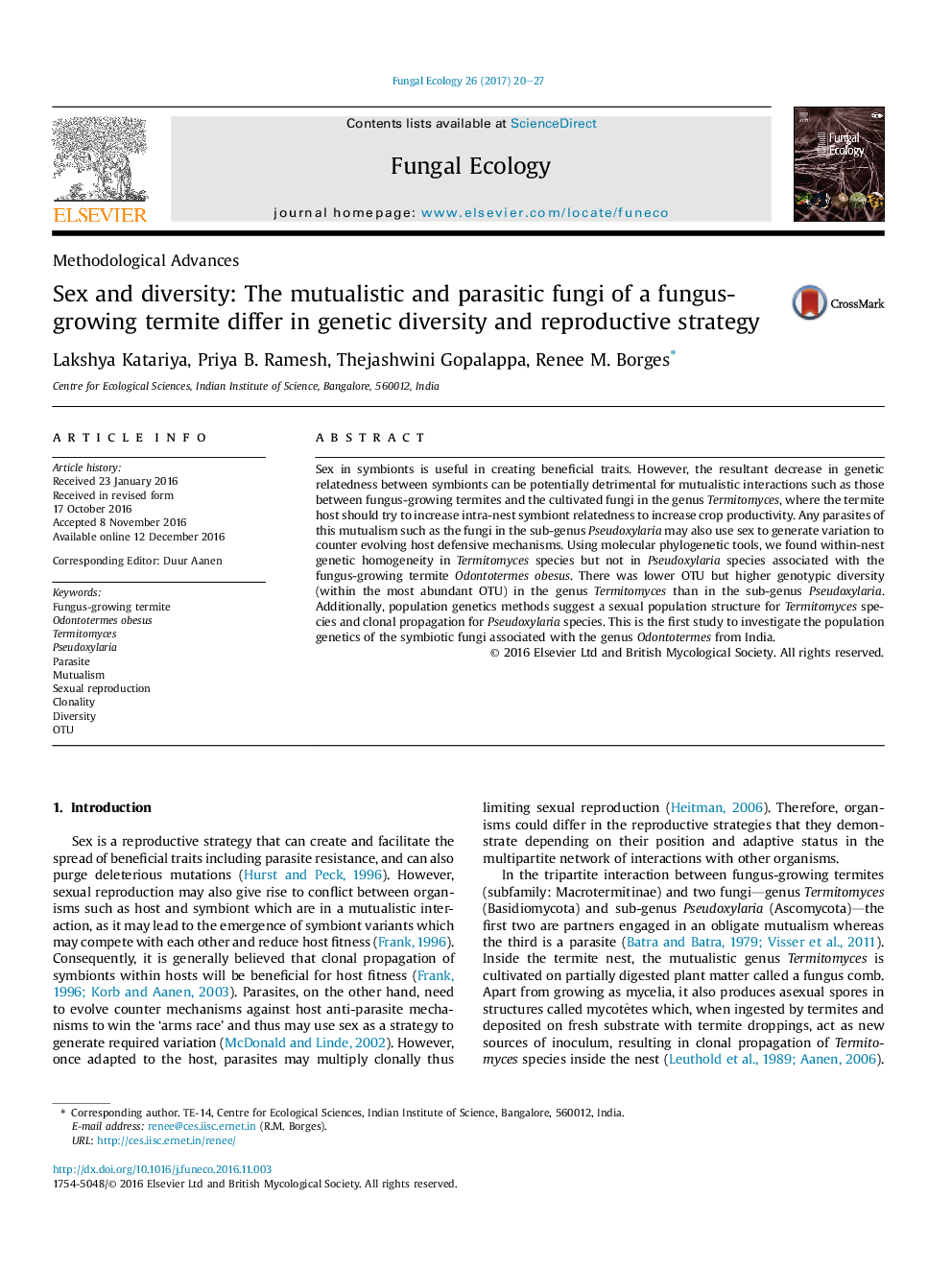| Article ID | Journal | Published Year | Pages | File Type |
|---|---|---|---|---|
| 5517640 | Fungal Ecology | 2017 | 8 Pages |
â¢Sexual population structure for mutualistic fungus of Odontotermes obesus.â¢Intra-nest genetic homogeneity for mutualistic fungus Termitomyces.â¢Intra-nest genetic diversity in the parasitic fungus Pseudoxylaria.â¢Lower OTU and higher genotypic diversity for Termitomyces than Pseudoxylaria.â¢First population genetic study on Odontotermes-associated Termitomyces from India.
Sex in symbionts is useful in creating beneficial traits. However, the resultant decrease in genetic relatedness between symbionts can be potentially detrimental for mutualistic interactions such as those between fungus-growing termites and the cultivated fungi in the genus Termitomyces, where the termite host should try to increase intra-nest symbiont relatedness to increase crop productivity. Any parasites of this mutualism such as the fungi in the sub-genus Pseudoxylaria may also use sex to generate variation to counter evolving host defensive mechanisms. Using molecular phylogenetic tools, we found within-nest genetic homogeneity in Termitomyces species but not in Pseudoxylaria species associated with the fungus-growing termite Odontotermes obesus. There was lower OTU but higher genotypic diversity (within the most abundant OTU) in the genus Termitomyces than in the sub-genus Pseudoxylaria. Additionally, population genetics methods suggest a sexual population structure for Termitomyces species and clonal propagation for Pseudoxylaria species. This is the first study to investigate the population genetics of the symbiotic fungi associated with the genus Odontotermes from India.
